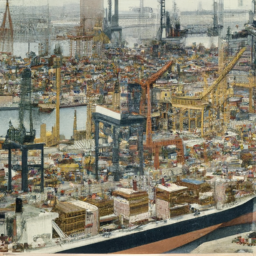Since the 1970s, a group of countries has emerged as world-class exporters, reshaping the global economic landscape. As highlighted in Commanding Heights, episode 3, these countries have made significant strides in manufacturing and exporting various products, from cars to computers, across the globe. This remarkable transformation has not only propelled their economies but also positioned them as major players in the international trade arena.
The driving force behind the rise of these export powerhouses lies in their adoption of market-driven economic policies. By embracing free-market principles, these countries have been able to tap into the global economy and leverage their competitive advantages. As a result, they have experienced substantial economic growth and industrialization, becoming formidable players in the international market.
The shift towards export-oriented economies has been instrumental in the economic development of these countries. By focusing on manufacturing goods for international consumption, they have managed to attract foreign investment, create employment opportunities, and boost their overall productivity. This export-led growth strategy has propelled them from relative obscurity to global recognition.
One of the key factors contributing to their success is their ability to adapt to changing market dynamics and technological advancements. These countries have invested heavily in research and development, enabling them to produce high-quality and innovative products that appeal to consumers worldwide. This continuous drive for improvement has allowed them to stay ahead of the competition and maintain a strong foothold in the global market.
Moreover, the emergence of these export powerhouses has catalyzed the growth of other industries within their economies. Ancillary sectors, such as logistics, transportation, and services, have flourished alongside their manufacturing prowess, creating a ripple effect of economic growth. This interconnectedness has further solidified their position as key players in the global economy.
The success of these countries has not gone unnoticed, as they have become attractive destinations for foreign investors seeking lucrative opportunities. Their stable economic policies, skilled workforce, and favorable business environments have made them magnets for multinational corporations looking to establish a presence in emerging markets. This influx of foreign capital has further bolstered their economic growth and propelled them onto the international stage.
However, the journey to becoming world-class exporters has not been without its challenges. These countries have had to navigate complex trade agreements, currency fluctuations, and intense global competition. They have had to constantly innovate, adapt, and diversify their export offerings to maintain their edge in an ever-evolving global marketplace.
In recent years, these export powerhouses have faced heightened scrutiny regarding trade imbalances and intellectual property rights. As their exports continue to surge, concerns have been raised about their impact on other nations' economies and the need for fair trade practices. Striking a balance between economic growth and international cooperation has become a critical challenge for these countries.
Nevertheless, the rise of these export powerhouses has undeniably reshaped the dynamics of international trade. They have disrupted traditional economic powerhouses, challenged existing norms, and provided a blueprint for other developing nations aspiring to emulate their success. Their story serves as a testament to the transformative power of market-driven economic policies and the potential of emerging markets in shaping the global economy.
In conclusion, since the 1970s, a group of countries has emerged as world-class exporters, revolutionizing the global economic landscape. Their export-oriented strategies, driven by market-driven policies, have propelled them to the forefront of international trade. As they continue to innovate, adapt, and compete, these export powerhouses will likely play an increasingly influential role in shaping the future of the global economy.
